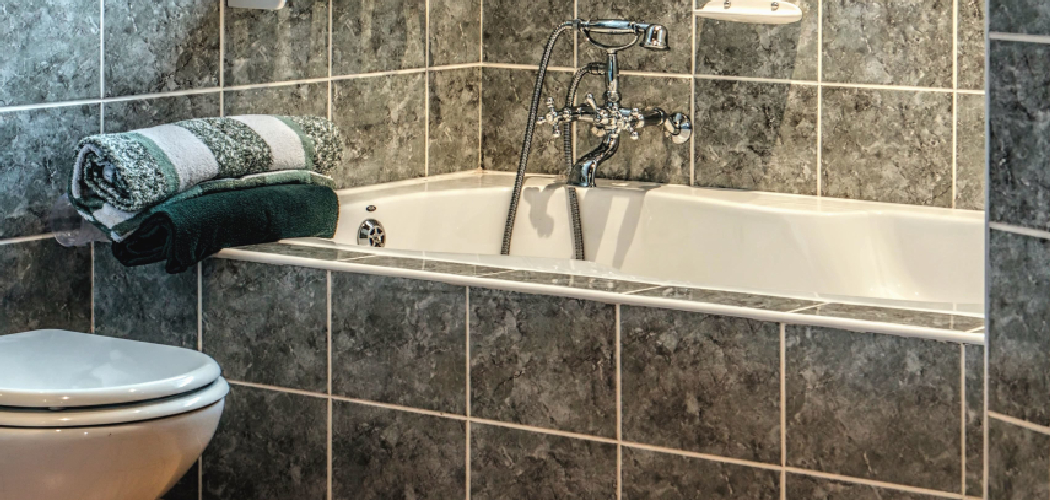Blue stains in bathtubs are a common problem that many homeowners encounter. These stains are often caused by minerals in water, particularly copper, which can oxidize and leave a bluish hue on surfaces. Additionally, certain cleaning products, bath oils, or even dyes in soaps and shampoos can contribute to this staining issue. Hard water, which is rich in minerals like copper, iron, or manganese, is a frequent culprit for these unsightly marks.
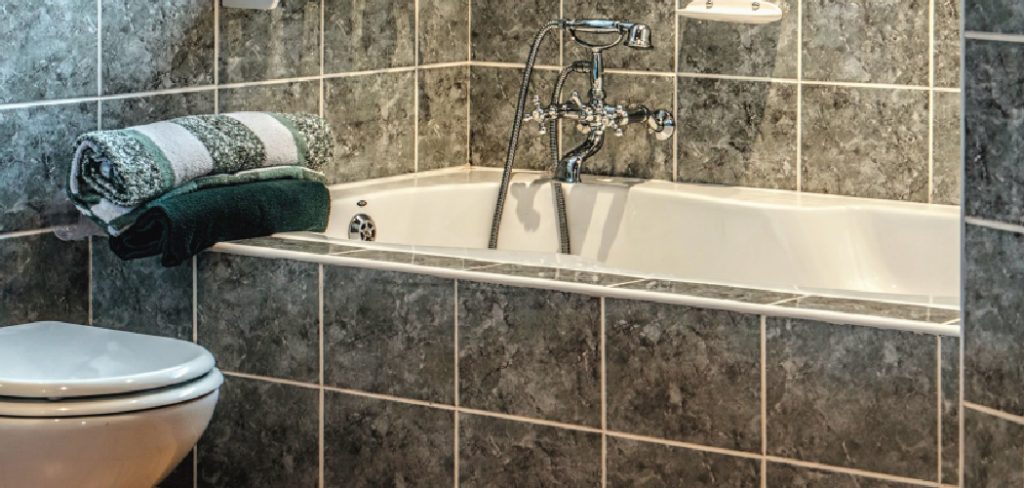
It’s essential to address blue stains promptly, as they can become more difficult to remove over time and may even cause permanent discoloration. Keeping your bathtub clean improves its appearance and ensures a more hygienic and welcoming environment.
This article aims to provide practical, step-by-step solutions on how to get rid of blue stains in bathtub surfaces effectively, restoring their original shine and beauty.
Identifying the Source of Blue Stains
Common Causes of Blue Stains
Blue stains in bathtubs often stem from a variety of sources. A common cause is hard water buildup, particularly from copper pipes or other mineral deposits present in the water supply. Over time, copper can oxidize and leave a bluish-green residue on bathtub surfaces. Additionally, certain bath products, such as blue bath bombs, heavily pigmented soaps, or cleaning solutions, can leave behind stains when they dissolve or interact with the tub’s surface.
Check for Pipe Issues
Blue stains may also serve as a warning sign of pipe corrosion. Aging plumbing systems, especially those with copper or brass pipes, can corrode over time, releasing copper particles into the water. This contributes to staining and may indicate a larger issue that needs to be addressed to protect the home’s plumbing system and water quality.
Testing for Stain Origin
To determine the source of the blue stains, run a simple test. Begin by filling the bathtub with water and letting it sit for a while. Then, observe whether the stains grow more prominent. If the stains worsen, it could point to hard water or pipe-related issues, requiring further investigation or professional assistance.
Using Baking Soda and Vinegar to Remove Stains
Blue stains in bathtubs can often be effectively removed using a simple and natural cleaning method involving baking soda and vinegar. This combination leverages the natural cleaning properties of both ingredients. The acidity of vinegar helps dissolve mineral deposits and copper residues, while baking soda acts as a gentle abrasive that lifts stains without damaging the tub’s surface.
Step 1: Prepare the Cleaning Solution
Mix baking soda with enough vinegar to create a thick, spreadable paste. The mixture may fizz initially as the two substances react, but this reaction is a key part of the cleaning process.
Step 2: Apply the Paste to Stained Areas
Once the paste is ready, use a spatula, spoon, or gloved hand to spread it over the blue-stained areas of the bathtub. Make sure to cover all affected spots thoroughly. Allow the paste to sit undisturbed for 15–30 minutes, giving it time to break down the stains and loosen any embedded particles.
Step 3: Scrub and Rinse
After waiting, take a non-abrasive sponge or a soft cloth and gently scrub the stained areas in circular motions. This will help lift the loosened deposits without scratching the tub’s finish. Once you’ve scrubbed the stains away, rinse the area thoroughly with warm water to remove all traces of the cleaning paste, leaving the surface clean and residue-free.
This method offers a safe, affordable, and effective solution for tackling stubborn blue stains in your bathtub.
How to Get Rid of Blue Stains in Bathtub: Using a Commercial Cleaner for Mineral Stains
When to Use a Commercial Cleaner

If stains are severe or persistent after trying homemade cleaning solutions, it may be time to use a specialized commercial cleaner designed to tackle mineral deposits. These cleaners are formulated specifically for breaking down tough buildup like hard water stains, lime scale, and other mineral residues that standard cleaning methods might struggle to remove.
Step 1: Choose the Right Cleaner
Select a cleaner specifically designed to address hard water stains and mineral buildup. Many of these products are labeled for bathroom use and safe for bathtubs, but read the label to verify compatibility with your tub’s material. Avoid cleaners with overly harsh chemicals that may harm the finish or emit strong fumes if ventilation is poor.
Step 2: Apply the Cleaner
Carefully follow the manufacturer’s instructions for applying the product. Most commercial cleaners require you to evenly spray or pour the solution over the stained areas of the tub. Typically, you will need to allow the cleaner to sit for 10–15 minutes, giving it adequate time to react with and break down the mineral deposits. Once the waiting period is over, use a sponge or soft-bristled brush to scrub the treated areas gently.
Step 3: Rinse the Tub Thoroughly
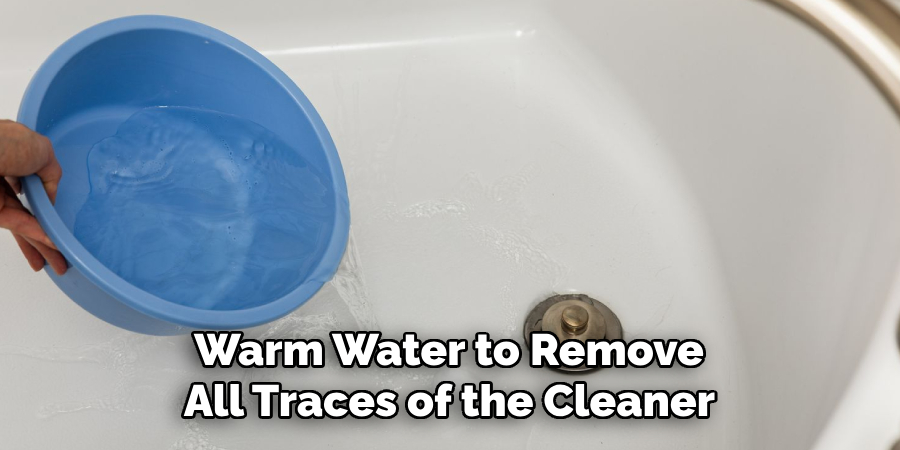
After cleaning, it’s essential to rinse the tub thoroughly with warm water to remove all traces of the cleaner. This step prevents residue from lingering, which could dull the surface over time. Ensure the tub feels smooth and free of any leftover product to maintain its appearance and safety.
Warning
Avoid using abrasive scrubbing tools such as wire brushes or rough pads, as these could scratch and damage your tub’s surface permanently. Always stick to gentle tools to preserve the finish and extend your tub’s lifespan.
Using a Magic Eraser for Persistent Stains
Why It Works
The melamine foam in Magic Erasers is designed to gently lift and remove even the most stubborn stains without causing damage to your tub’s surface. Its microstructures act like fine sandpaper, targeting dirt and grime effectively while still being safe for smooth finishes.
Step 1: Wet the Magic Eraser
Begin by dampening the Magic Eraser with water to activate its cleaning properties. Ensure it is wet enough to glide easily but not overly soaked, as excess water can dilute its effectiveness.
Step 2: Scrub the Stained Area
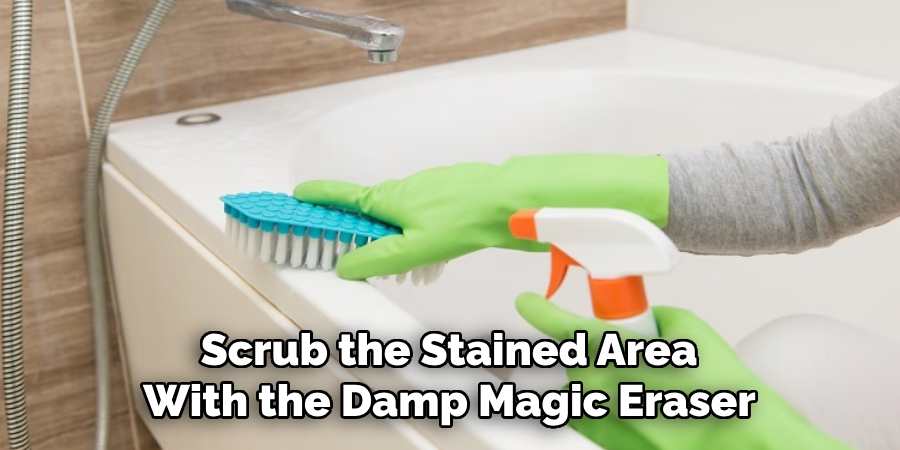
Using gentle circular motions, scrub the stained area with the damp Magic Eraser. Apply light to moderate pressure, allowing the eraser’s foam to loosen and remove grime from the tub’s surface.
Step 3: Rinse and Repeat if Necessary
Once the stain begins to lift, rinse the area thoroughly with warm water to remove any residue left behind by the eraser. If the stain persists, repeat the process, focusing on the affected spot until the desired cleanliness is achieved.
By following these steps, you can tackle tough stains effectively while preserving your tub’s smooth finish and ensuring a spotless result.
Using Hydrogen Peroxide for Stubborn Stains
Hydrogen peroxide is an effective solution for tackling stubborn blue stains in your bathtub. This mild bleach works by breaking down mineral deposits and other residues, leaving your tub clean and refreshed. Its gentle yet powerful properties make it a go-to option for more challenging cleaning tasks.
Step 1: Apply Hydrogen Peroxide
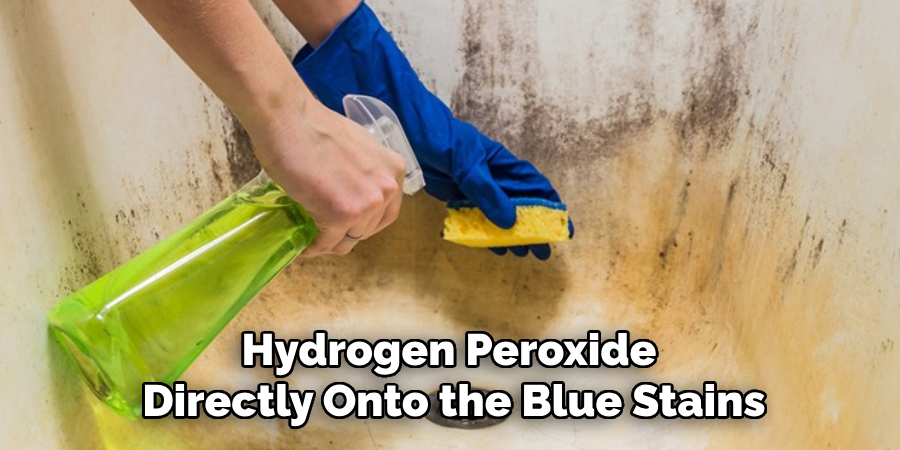
Start by pouring 3% hydrogen peroxide directly onto the blue stains. Be sure to cover the entire affected area to ensure maximum effectiveness.
Step 2: Let It Sit
Allow the hydrogen peroxide to sit on the stains for 10-15 minutes. During this time, it will work to break down the mineral deposits and loosen the stain, making it easier to remove.
Step 3: Scrub and Rinse
Gently scrub the stained area to lift the residue using a soft cloth or sponge. Once you’re satisfied with the result, rinse the tub thoroughly with warm water to remove any remaining traces of hydrogen peroxide and dislodged stains.
By using hydrogen peroxide in this way, you can effectively address even the most stubborn stains without causing harm to your tub’s surface.
Preventing Future Blue Stains in the Bathtub
To keep your bathtub free of blue stains in the future, it’s important to adopt preventive measures to tackle the common causes of staining.
Install a Water Softener
Blue stains are often caused by hard water reacting with plumbing materials or mineral deposits. Installing a water softener can help reduce mineral buildup, preventing blue stains before they occur. A water softener ensures that your water supply is treated, offering long-term protection against hard water issues.
Use Blue-Free Bath Products
Avoiding bath products that contain dyes, such as bath bombs, soaps, or cleaning agents, is another critical step. Such products can leave behind stubborn, colorful stains that are difficult to remove. Opt for dye-free options to maintain a clean and stain-free tub.
Rinse the Tub After Each Use
After each bath or shower, take a moment to rinse the tub thoroughly with clean water. This simple habit helps remove lingering soap residue, oils, or minerals, ensuring they don’t have a chance to build up over time.
Regular Cleaning
Establishing a weekly cleaning routine for your bathtub can help catch and eliminate any debris or deposits before they cause visible staining. Use mild cleaning products to scrub and maintain your tub’s pristine condition gently.
With these proactive steps, you can enjoy a sparkling, stain-free bathtub for years to come.
Conclusion
Blue stains in the bathtub are most often caused by hard water minerals or dyed bath products, leaving behind unsightly marks. Fortunately, there are several effective solutions for tackling this issue. From natural remedies like vinegar and baking soda to specialized commercial cleaners, understanding how to get rid of blue stains in bathtub surfaces is key to restoring their shine.
To prevent future staining, adopt habits such as using dye-free products, rinsing the tub after use, and maintaining a regular cleaning routine. You can ensure your bathtub stays clean and inviting with consistent care and proactive measures.

